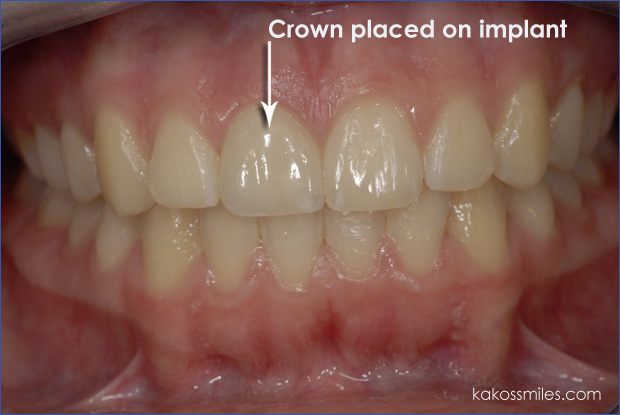Dental Implants Maintenance. Facts You Should Know
Long term success of a dental implant depends on routine, frequent examinations.
One of the most important factors is the maintenance of the tissue surrounding the implant. Examination of the mobility of the implant, the presence or absence of bleeding, bone height, your comfort, and your daily plaque removal are all part of the dental implant assessment that we check during your maintenance/cleaning appointment.
A healthy implant shows the following: no pain or discomfort, no mobility, no bone loss in radiographs, healthy gingival tissue surrounding the abutment, no swelling, no bleeding or increased probing depths on gentle probing performed with plastic instrument around the implant.
Radiographs of Dental Implants
During regular maintenance appointments, we take radiographs to evaluate the bone level and bone density. Dental radiographs also allow for the evaluation of the fit of the prosthesis and the integrity and adaptation of the different implant components.
Dental implants should be checked radiographically at least once a year.
Control of Inflammation Around Dental Implants
The tissues around the implant react to microorganisms and their toxic products in a manner similar to the gingiva surrounding natural teeth. The bacterial infection is a concern. Periodontal infection around the implant is called peri-implantitis and can lead to loss of bone around the implant and future implant failure. The better the patient self-care the greater the possibilities of maintaining healthy tissue with no inflammation.
Bleeding, red swollen gums should be brought to the attention of the dentist.
Self – Care Instructions
Dental hygienists assist you in maintaining dental implants by providing oral hygiene education pertinent to dental implant care. Appropriate home care tools are introduced and demonstrated to you. Meticulous daily removal of bacterial biofilm is key to preventing inflammation.
Mobility of Dental Implants and Suppuration
Implant mobility is often present in a failed implant and is always brought to a dentist’s attention. Careful mobility testing is done with a close visual inspection for fluid at the gingival margin; fluid emerging from the area around an implant on mobility provocation can be a significant ailment.
Dental implants mobility can also result from a loosening of the screw that attaches the abutment post to the implant fixture.
Debridement of Dental Implants
During your maintenance appointment at our dental office, we perform careful implant debridement with plastic or titanium scalers and ultrasonic tip with a plastic sheath that is safe for use on implants and prevent scratches.
Implant Maintenance Frequency

Dental hygienist determines the best interval for each specific case. Implant maintenance appointments should be scheduled as frequently as necessary to keep the periodontal tissue healthy.
If you have dental implants and you haven’t had your professional cleaning and check-up for a while, remember to schedule your appointment here at our dental office in Arlington Heights to prevent peri-implant disease.
